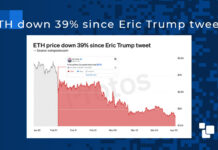Bitcoin ETFs add half a billion in net inflow, outpacing the current market supply of Bitcoin by 10x.
The spot Bitcoin exchange-traded funds (ETF) net inflow hit $562 million on March 4, adding another half a billion to the ETFs on a day when BTC price breached $68,000 with all-time highs under 1% away. This marked the third-largest inflow for BTC since they started trading on Jan. 11.
The Monday ETF net inflow might not be the largest, owing to outflows from multiple smaller players and Grayscale Bitcoin Trust (GBTC). However, considering $368 million in outflows from GBTC, the half-a-billion net inflow indicates a continued strong institutional demand. BlackRock’s IBIT recorded the largest inflow with $420 million, followed by Fidelity’s FBTC with $404 million. The net inflow into spot Bitcoin ETF is 10 times the number of new miners added daily.
Bitcoin ETF trading volume on Monday peaked at $5.5 billion, making it the second-highest volume day since launch. The high trading volume and institutional demand are also evident from the fact that institutional Bitcoin ETFs, ETPs, and trackers now handle 1 million BTC or about 5.13% of the total BTC circulating supply.
Bitcoin ETFs started trading in the second week of January, and within two months have seen a net inflow of $7.5 billion worth of BTC despite over $9 billion worth of assets in the outflow. BlackRock’s IBIT ETFs have already reached $10 billion, while gold ETFs took nearly two years to reach that figure.

Bitcoin ETFs might see increased demand in the coming days, with BlackRock filing to purchase BTC for its Strategic Income Opportunities Fund. With the Bitcoin halving scheduled for next month, the BTC daily supply will be reduced to half despite a 10x greater demand in the current market, indicating a high supply-demand imbalance that could act as a catalyst for BTC price during the bull run.
The latest $500 million plus net inflow for spot Bitcoin ETFs came when the BTC price breached $68,000. It is currently just under $1,000 shy of the all-time high of the last price cycle.
Source: Cointelegraph.com




